Subscribe to our ▶️ YouTube channel 🔴 for the latest videos, updates, and tips.
Classification of Matrices
We will discuss here about the classification of matrices.
Matrices are classified according to the number of rows and columns, and the specific elements therein.
(i) Row Matrix: A matrix which has exactly one row is called a row matrix.
For example,
The above two matrices are row matrices because each has only one row.
(ii) Column Matrix: A matrix which has exactly one column is called a column matrix.
For example,
The above two matrices are column matrices because each has only one column.
(iii) Rectangular Matrix: A matrix of the order m × n in which m ≠ n is called a rectangular matrix.
For example,
The above three are rectangular matrices because in each of the matrices, number of rows ≠ number of columns.
(iv) Zero Matrix or Null Matrix: A matrix is called a zero matrix if all its elements are zeros.
For example,
The above three matrices are all zero matrices of different orders.
(v) Square Matrix: A matrix of the order m × n in which m = n is called a square matrix of order m (or n).
For example,
The above two matrices are square matrices because in each of the matrices, number of rows = number of columns.
(vi) Unit Matrix or Identity Matrix: A square matrix in which all elements in the leading diagonal are 1 and the other elements are zeros, is called a unit matrix.
For example,
The above two matrices are unit matrices of order 2 × 2 and 3 × 3 respectively
because the elements in the leading diagonals (shown by broken lines) are 1 and
the rest of the elements are zeros.
From Classification of Matrices to HOME PAGE
Didn't find what you were looking for? Or want to know more information about Math Only Math. Use this Google Search to find what you need.
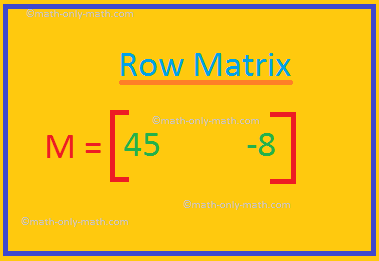

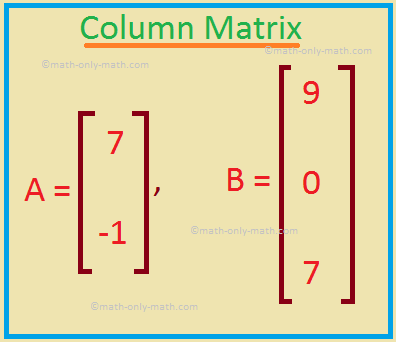
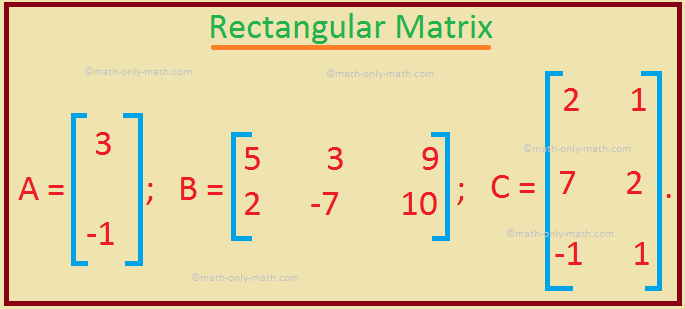
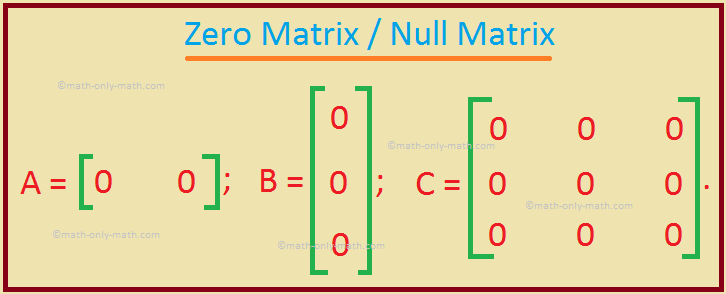
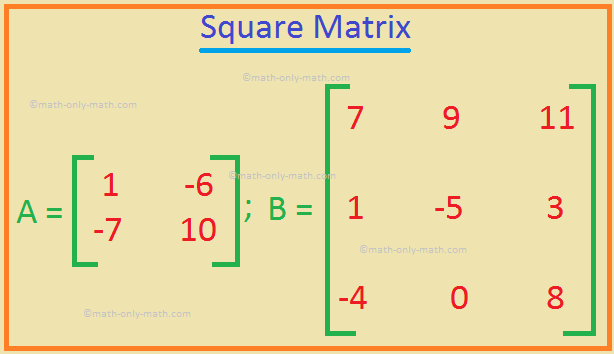



New! Comments
Have your say about what you just read! Leave me a comment in the box below. Ask a Question or Answer a Question.